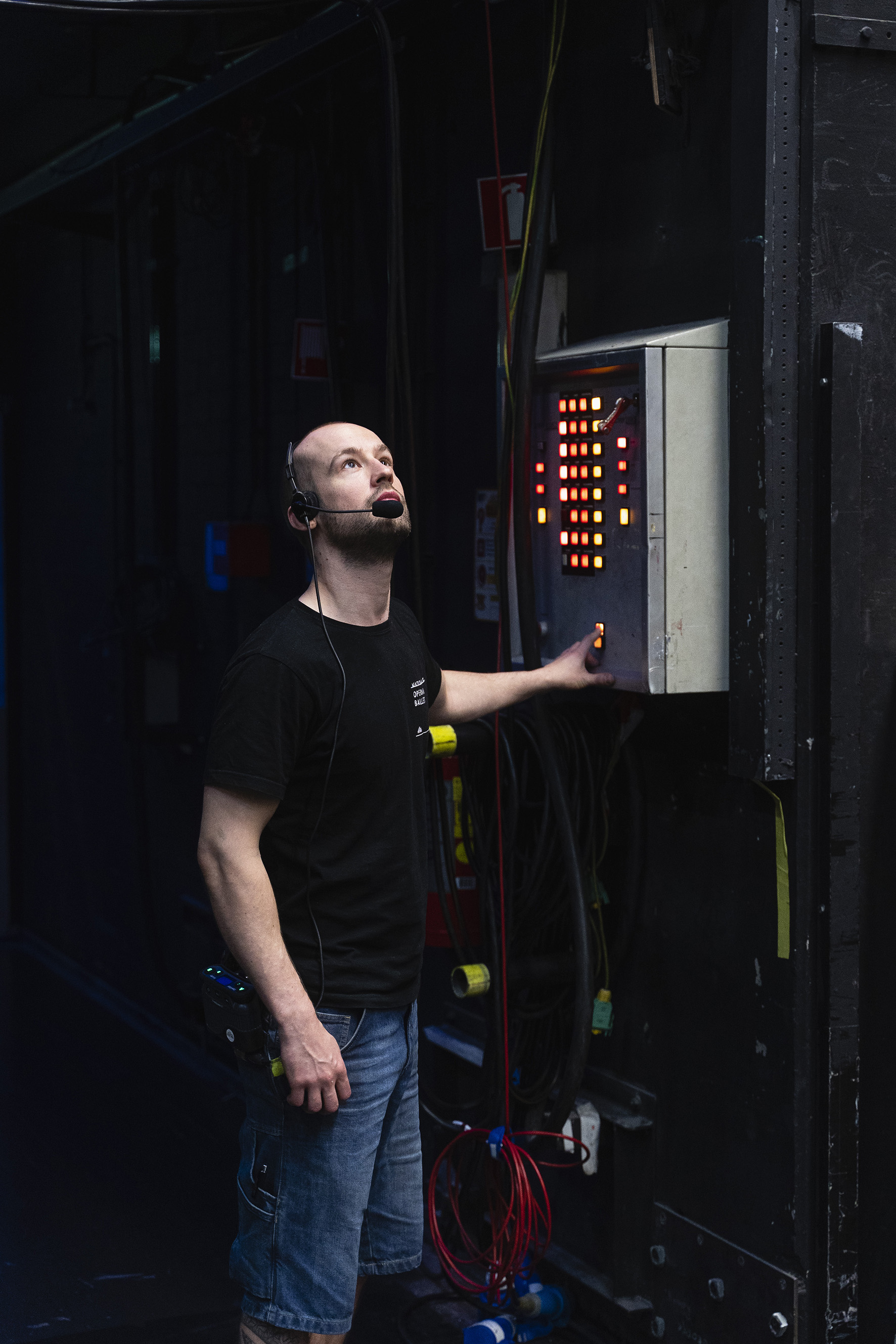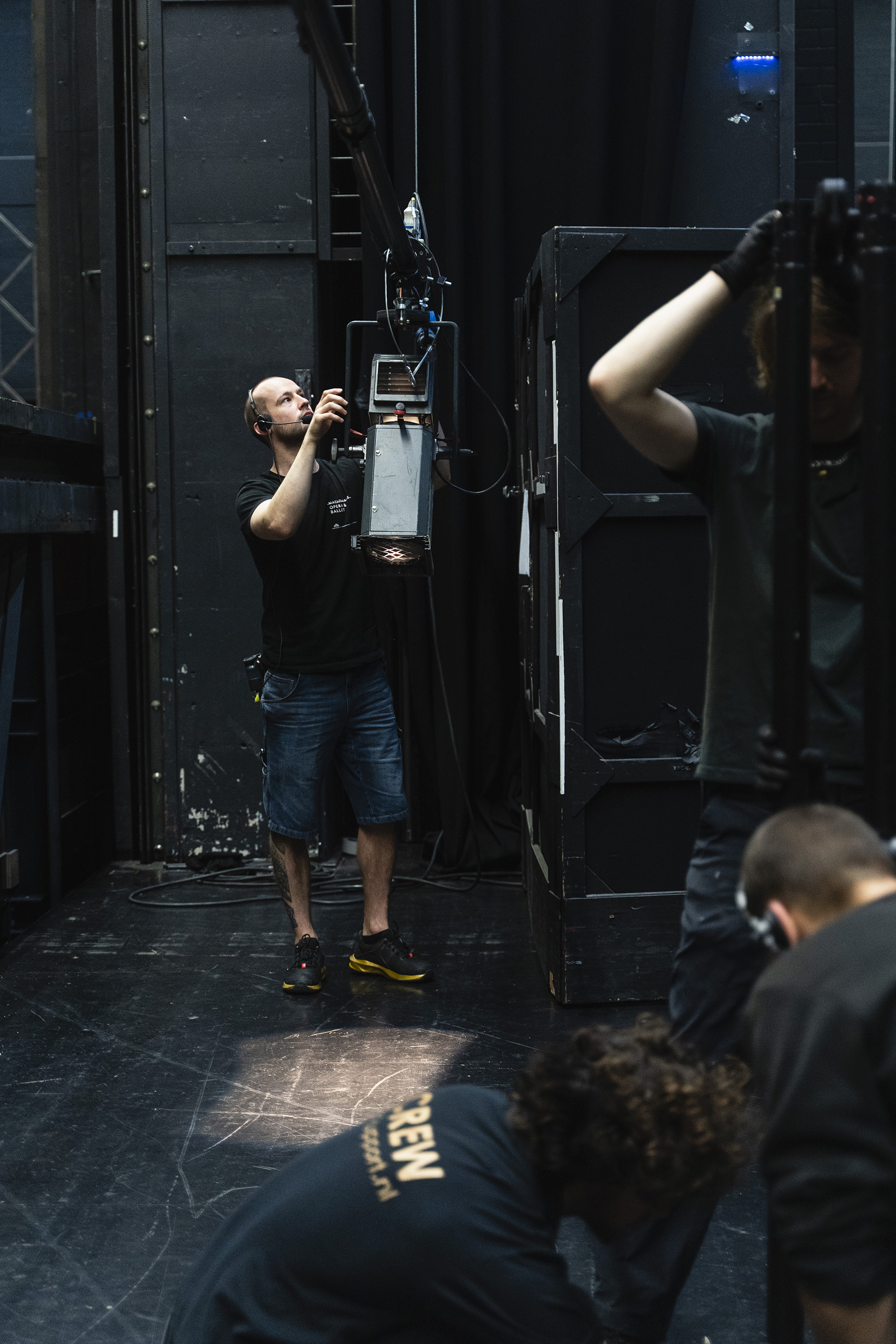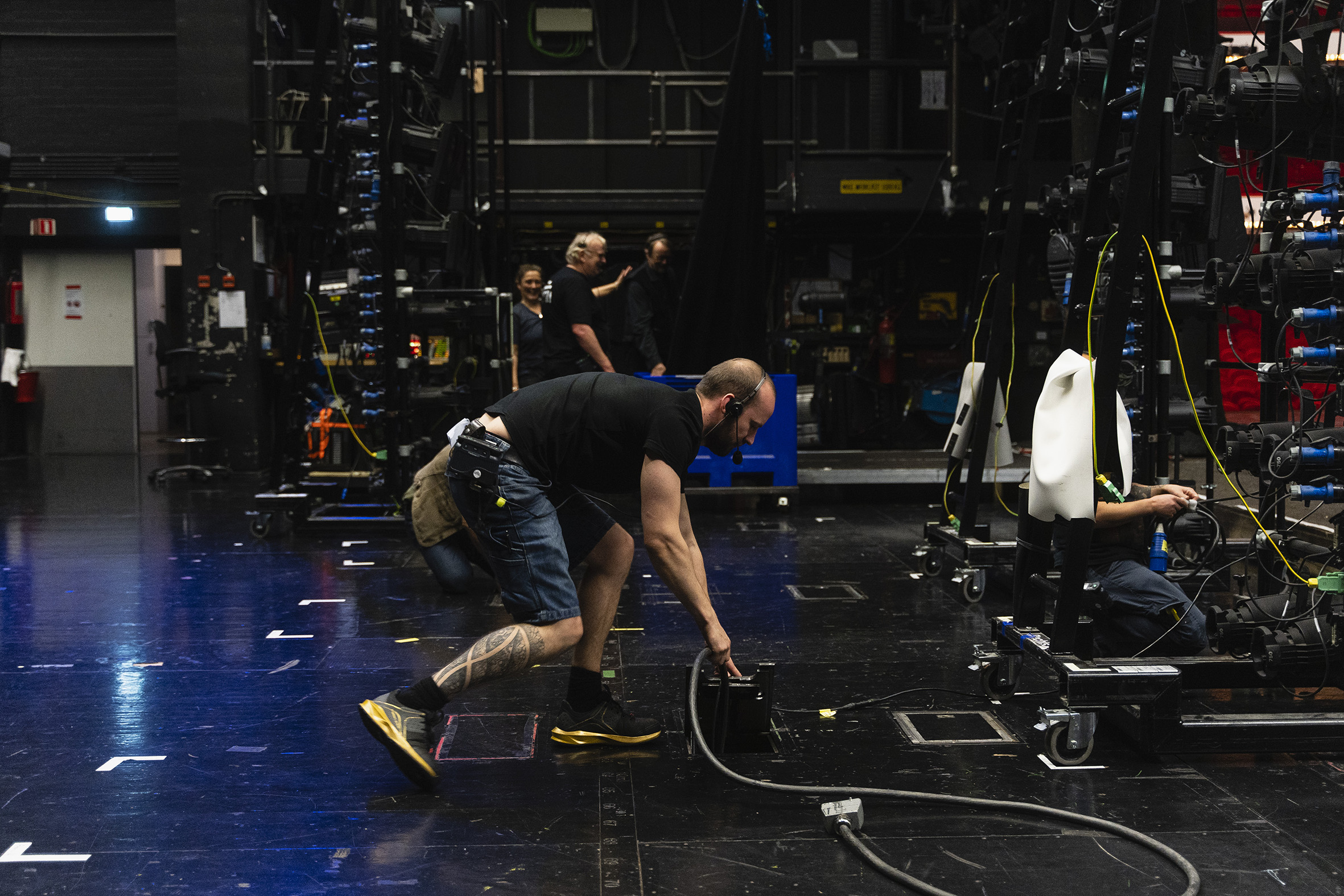
The craft of theatre: Lighting
Ballet and opera productions are often magical, but they are not just pulled out of a hat. Behind the scenes, each person in each department is working hard and doing their bit to make the magic happen, whether that is lighting, costumes or sets. But who does what? And what does this process involve? Today, we are speaking to Bram Schipper who works as an all-round technician in the lighting department.
Text: Lune Visser
He started at the theatre as an in intern and never left. Now, some ten years later, Bram Schipper still pinches himself every day about the work he does at Dutch National Opera & Ballet – just as he did then. “As a lighting technician, I prepare and rig the lighting system, but also run shows, assist with any scene changes and help disassemble the stage at the end of the production. No two days are the same: each day brings fresh challenges, and it’s my job to figure out how to make things work and what the best solution is. I remember the first performance I ever worked on at Dutch National Opera & Ballet: the set arrived and was assembled on stage and I was in complete awe as we set up the lighting – ensuring it had the right focus. But I have to say that moment continues to be special each and every single time: especially when the singers or dancers come on – it makes the stage come alive.”


Assembly, operations, lighting
A lot of work goes on behind the scenes to achieve the final end result. Bram explains: “It always starts with the head of lighting meeting with the lighting designer – sometimes up to a year in advance – to discuss a production’s lighting requirements. The head of lighting knows which materials are on hand in house, and what is possible and what isn’t. As soon as the final plot has been completed, the head of lighting and the designer present it to the rest of the team. We then split up into smaller teams, consisting of both senior lighting technicians and lighting technicians, so that we can get started on the plot. We have an assembly crew who starts work at 8:00 in the morning and sets everything up for the performance: they rig the lights, test everything, and ensure everything is working as it should before the set is placed under the lights. At around 15:00, the evening performance crew arrives: they help set up the stage and adjust the lights as needed. You might be in the assembly crew one day and then in the performance crew the next day – this varies per day, week or production and keeps things interesting.”

Opera lighting versus ballet lighting
The work at Dutch National Opera & Ballet is also varied because opera and ballet have such different lighting requirements. “For instance, ballet performances always use a sprung floor – made from cork and foam – to prevent the dancers from getting injured. A roll-out dance floor is then spread out over this. You can’t really use heavy sets on these types of floors – plus the dancers need space to be able to move around. Ballet lighting therefore tends to be quite similar: generally, the light needs to be attractive and pleasing, focusing on the open dance floor in the middle of the stage. In opera, the sets tend to be larger and a lot more out-there. What’s more, the sets can easily be placed in the centre of the stage. It can therefore be quite challenging trying to get the light to shine on a particular spot, which is why you need a strategy for how you will deal with the different lamps, cables, heights and distances. That's what I enjoy most about this job: figuring out the best way to tackle issues so that you deliver top-notch quality performances.”



